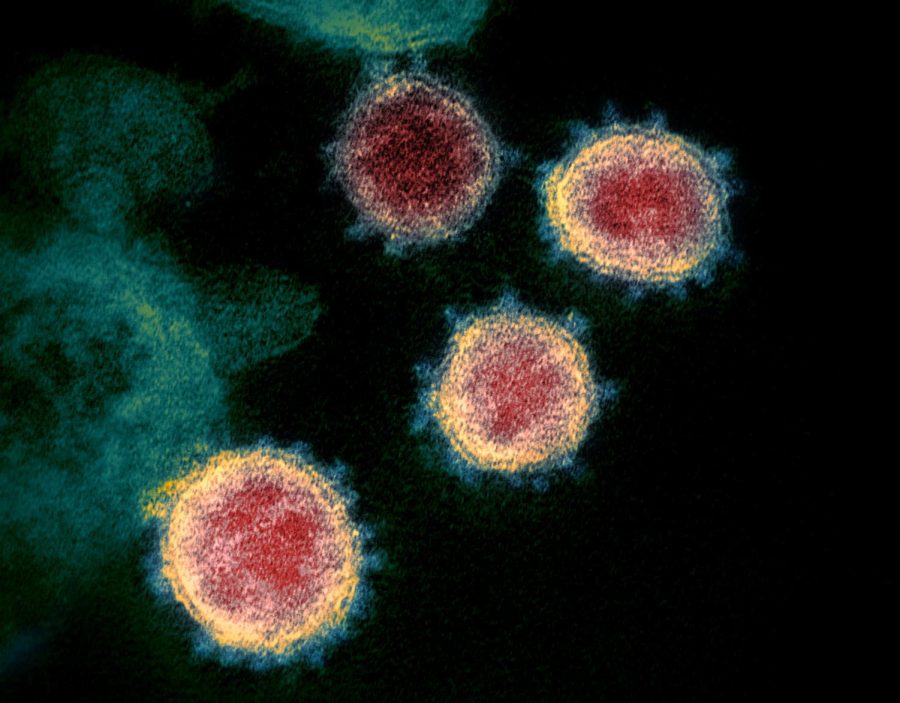25 residents in Clark Hall to quarantine until Oct. 7
This transmission electron microscope image shows SARS-CoV-2—also known as 2019-nCoV, the virus that causes COVID-19—isolated from a patient in the U.S. Virus particles are shown emerging from the surface of cells cultured in the lab. The spikes on the outer edge of the virus particles give coronaviruses their name, which means “crown-like.”
September 25, 2020
Twenty-five residents of Clark Hall are in quarantine after two positive cases of COVID-19 were detected among students living there. The Kent City Health Department told residents they must quarantine until Oct. 7.
The students will stay in a separate section of Clark Hall with meals provided along with other university resources through the quarantine period. According to a press release put out by the university, anyone who tests positive will move to isolation. President Todd Diacon said the university has roughly 300 beds set aside for isolation.
“Isolation is when you’ve tested positive for COVID-19,” Diacon said. “And then we have all of Verder Hall set aside for quarantine students. And just a reminder, quarantine is when you have been close to someone who has tested positive for COVID-19.”
False rumors circulated on social media that students were quarantined in Allyn Hall. Eric Mansfield, assistant vice president of content strategy and communication, said there may be individual students who live in Allyn who were told to isolate if they had close contact with another person who tested positive for the virus.
The Centers for Disease Control and Prevention (CDC) defines close contact as being within 6 feet of an infected person for at least 15 minutes at any point up to two days before illness onset. If the patient is asymptomatic, the time frame becomes two days prior to the COVID-19 test.
Contact Gina Butkovich at [email protected] and Lauren Sasala at [email protected].
SUPPORT STUDENT MEDIA
Hi, I’m Lauren Sasala, a senior journalism student from Toledo. I’m also the editor in chief of The Kent Stater and KentWired this semester. My staff and I are committed to bringing you the most important news about Kent State and the Kent community. We are full-time students and hard-working journalists. While we get support from the student media fee and earned revenue such as advertising, both of those continue to decline. Your generous gift of any amount will help enhance our student experience as we grow into working professionals. Please go here to donate.

























